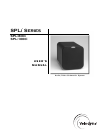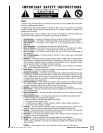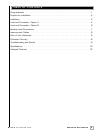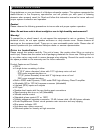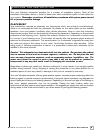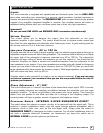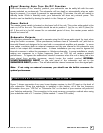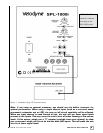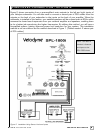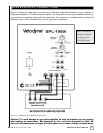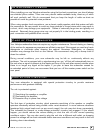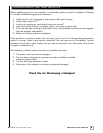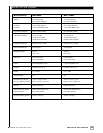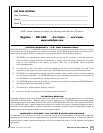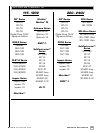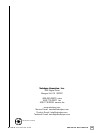
8
.
www.velodyne.com
SPLi Series User’s Manual
Care of Your Subwoofer
Your Velodyne subwoofer does not require any regular maintenance. Normal dusting or cleaning
of the surface for appearance purposes are all that is required. We suggest you avoid any harsh
detergents or chemicals when cleaning the cabinet. Abrasives, detergents, or cleaning
solutions may damage the finish on the cabinet. We recommend using only a damp cloth to
clean the cabinet.
During nor
mal conditions, your new subwoofer may be left on continuously without any
pr
oblems. The unit is equipped with a signal-sensing turn on/ off that will automatically turn on
the unit when a signal is present at the inputs and turn of
f the unit after several minutes when
there is no longer any signal at the inputs. If you plan to leave the subwoofer unused for
an extended period of time, we recommend that you turn off the master power switch on the
rear panel.
Your new subwoofer is equipped with special protection circuitry to provide maximum
performance with greatest reliability.
The unit is protected against:
1) Overdriving the speaker or amplifier
2) Over
heating the amplifier
3) Excessive drop in power line voltage
The first type of pr
otection circuitry which prevents overdriving of the speaker or amplifier
operates constantly without being audible under most situations. In some extreme situations
(sustained high output levels such as pro sound usage), the unit may shut down momentarily.
This indicates the thermal or under-voltage protection circuitry has engaged. If this should
happen, you should reduce the volume setting or shut the unit off until normal operating
conditions return. You may also want to plug the unit into a different wall outlet, as dropping
power line voltage will be most noticeable under str
enuous conditions and may r
esult in the unit
shutting down intermittently.
Pro tection Circuitry
W
hen installing your new Velodyne subwoofer using the line level connections, you should always
use shielded phono cables. There are many decent cables available today, most any of which
will work perfectly well. We do recommend that you keep the length of cable as short as
possible to avoid any potential noise problems.
When using speaker level connections, use a decent quality speaker cable that mates well with
the connectors. Be very careful to avoid any loose strands or frayed wires which may result in
a short, which may damage your equipment. Cables of extremely large size are typically not
required. Extremely large gauge wire may not properly fit in the binding posts, resulting in a
poor connection and possible short circuits.
Interconnect Cables



